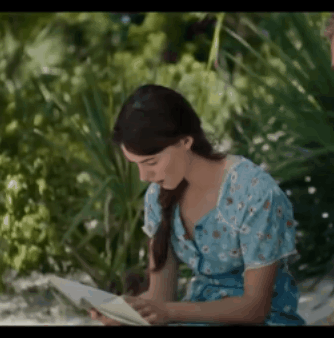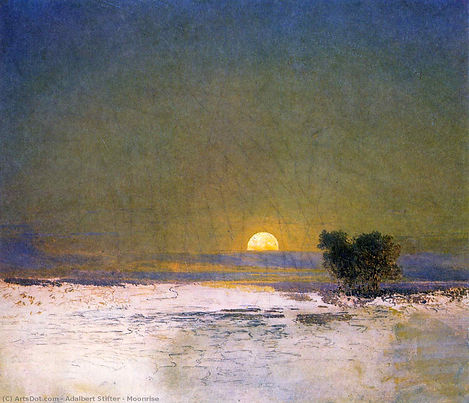
ANNE DYMEK
Language, Mind, Media
About Me

I am currently a lecturer in Germanic Languages and Literatures at Harvard University. My research focuses on theories of language, cognitive semiotics, poetry, film, and new media.
Thirteen years of teaching across three continents and four disciplines have expanded my perspective and opened worlds.
Before joining the faculty at Harvard (Departments of German and Mind, Brain, Behavior), I taught in the Department of Social Sciences at the American University of Sulaimania Iraq, the Department of Philosophy at Otto-Friedrich Universität Bamberg, the Institut Européen de Cinéma et d'Audiovisuel in Nancy, and the Department of Arts et Sciences de l'Art at Paris 1,
My thinking has evolved through two doctoral studies: I have a PhD in film philosophy from Université Paris 1 Panthéon-Sorbonne (2013) and a PhD in literary theory from Harvard University (2022). My research in film explores the semiotic nature of filmic perception and its relationship to the perception of reality. My literary research expands this exploration into how literature engages cognitive processes—especially imagination, metaphor, and perception—to create immersive and creative worlds in the mind.
I am currently completing a book on Hölderlin’s Patmos, under contract with Routledge, exploring the psycholinguistic strategies by which Hölderlin guides readers into specific states of mind and consciousness.
I am also working on a second manuscript, In the Beginning Was the Word, which examines how language gives rise to conceptual thought, imagination, and selfhood—and what we risk losing in an age of AI if we outsource complex language to machines.
My interest in media extends beyond literature and film: I have also edited a collected volume for RSSI on the Semiotics of Music.
Writing
Ongoing Writing Projects (Selection)

Language of Revelation.
On Hölderlin's "Patmos"
(Routledge, 2026)
Friedrich Hölderlin’s Patmos (1803) is among the most intricate and conceptually rich works of modern poetry—demanding in its linguistic structure, philosophical depth, and theological resonance. Yet despite its status as a landmark of world literature, Patmos has never received a dedicated English-language monograph, nor a translation that fully preserves the philological complexities of Hölderlin’s language.
This book presents the first critically annotated metaphrase translation of Patmos into English, offering a line-by-line rendering that maintains Hölderlin’s syntax while illuminating the poem’s conceptual layers. By integrating close reading, literary hermeneutics, and translation theory, I argue that the hymn functions as a psycholinguistic exercise—its syntax inducing a state of interpretive oscillation, mirroring the experience of revelation itself.
More than a new reading of Patmos, this study fills a major gap in Anglophone Hölderlin scholarship by making his poetry accessible to readers with limited or no German, while also engaging with Hölderlin’s broader intellectual context—including German Idealism, theology, and his own radical approach to translation. It offers a philologically precise alternative to poetic renderings of Hölderlin’s work, allowing for a deeper understanding of the hymn’s language, structure, and intellectual ambitions.
Both a groundbreaking translation and an original contribution to literary scholarship, this book provides new insights into Hölderlin’s poetics, his theory of translation, and the dynamic interplay between language, meaning, and revelation.
In the Beginning Was the Word: How Language Grows Minds—and How to Stay Human with AI
What if outsourcing language meant losing yourself?
This book argues that language doesn’t just express thought—it builds it. It gives rise to abstraction, imagination, self-reflection, and our ability to understand others. Research has shown that without access to a sufficiently complex language by around age ten, the brain may never fully develop key cognitive capacities such as theory of mind and conceptual reasoning. Language doesn’t just convey social thought—it makes it possible.
And yet, human use of symbolic language is in decline. Reading rates have been steadily falling, replaced by 10-second TikTok clips, first-person shooter games, and selfie-centered social media. We are shifting from immersive, perspective-rich engagement to flattened, reactive forms of attention. Our symbolic muscles are atrophying.
At the same time, large language models are evolving in the opposite direction. Their capacity for symbolic, abstract, and metaphorical expression is rapidly expanding. While we offload more of our linguistic depth to machines, they are growing more fluent in the very cognitive terrain we are abandoning.
I see this erosion firsthand in my work with young people. Many now struggle to engage with language that requires perspective-taking, narrative depth, or symbolic complexity. Some have difficulty reading in the third person at all—their minds resist immersion in another point of view. Their sense of self and other, and their grasp of layered perspective, often feel fragmented or underdeveloped. Rebuilding these capacities through language is slow, delicate work—but increasingly urgent in the face of a culture that no longer naturally supports them.
This isn’t a nostalgic call to read more books. It’s a call to invent something new: a language-based technology designed to stimulate the brain’s symbolic networks the way literature once did. Our minds still need what Joyce, Woolf, Auster, or Coetzee once offered. If books no longer hold that space for most people, we must build a form that can.
This book is both a warning and a proposal—for preserving the imaginative brain, reclaiming cognitive agency, and staying human in a world where language no longer belongs only to us.

Stifter’s Subtle Resistance: Reimagining the Real
(Article in Peer-Review)
This article focuses on Adalbert Stifter’s (1805 – 1868) distinctive poetic realism, examining how his work strategically resists the full immersion of the reader as described in Barthes’ effet de réel. Through a close reading of the chapter “Die Einkehr” from Stifter’s Nachsommer, the paper reveals how Stifter carefully constructs moments of referential illusion but ultimately suspends and reverses them, preventing the effet de réel from fully unfolding. This approach highlights Stifter’s ‘Janus-faced’ realism, where reality is seen as both an external entity independent of perception and an internal reality shaped by thought. Along the way, the paper also clarifies Barthes’ theory of effet de réel, presenting it as a complex cognitive mechanism involving referential illusion and hypostatization, and refines broader concepts of literary realism by addressing common misconceptions about mimesis and verisimilitude.

Proof of a Beautiful Life or the End of Morality?
The Age of Social Media
(Long-Term Book Project)

This study will investigate the intersections of aesthetics and morality in the digital era, focusing on how social media influences aesthetics and concepts of ethics and freedom. The central inquiry will assess whether the rise of social media signifies a decline in moral values or a transformation of ethical frameworks. Drawing on insights from German philosophy of mind and art, the project will explore how these social dynamics reflect broader philosophical concerns about aesthetics and morality.
Publications
Article: Perception, Dreams, Films:
I propose that in Peirce's theory of perception, the index serves as the foundational element, preceding the icon. Building on this idea, I investigate how filmic perception both reflects and differs from real-world perception.
Book: Cinéma et Sémiotique. Deleuze en Question
Si la question du rapport entre l’image et le signe hante Deleuze, celui-ci n’a pas véritablement utilisé les théories pourtant fondamentales de Charles Sanders Peirce pour y répondre. Il a préféré établir une « sémiotique filmique » mi-bergsonienne mi-peircienne, qui tente de concilier le pouvoir immersif du cinéma et la force cognitive de ses représentations. Cette théorie phénoménologique est-elle valable ? Telle est la question que nous voulons poser dans cet ouvrage. C’est d’ailleurs à nos yeux la question de base des Cinéma deleuziens.
The book explores the relation between image, sign, and representation in Deleuze’s Cinema I and II, highlighting the structural weaknesses in Deleuze’s approach. It contrasts the ontologies of Bergson and Peirce, demonstrating how Deleuze's cinema project inherits Bergson’s epistemological dualism, and argues that Peirce's semiotic phaneroscopy is more compatible with Deleuze's immanentism
Edited Volume: Semiotics of Music
While there is a general agreement that music transcends language, how exactly it does so remains open to question. Is it too vague (but then, what is vagueness, conceptually?), or is it too precise or specific for words, as Mendelssohn once put it? By bringing together articles from scholars working in philosophical semiotics and aesthetics, musicology, and literary theory, the motivation for the present volume was to provide a substantial contribution to the still nascent discipline of musical semiotics.
Article: Toucher aux limites du filmique : Images du monde visionnaire (1963)
Does the medium of film have the ability to represent the perceptive environment experienced when taking narcotics?
Article: L’iconicité filmique. Un métalangage de la perception ?
Can filmic language be understood as a metalanguage of the forms of perception?
Teaching
My Courses at Harvard AY 2024-2025

Poetry is a powerful tool for expressing and exploring the human experience. But what is it about poetry that allows it to connect with us so deeply? What can we learn about the workings of the brain, the mind, and the nature of human experience through the study of poetry, and vice versa? In this course, we delve into the science and art of poetic expression, reception, and interpretation, drawing on insights from literary and cultural studies, neuroscience, philosophy, and (psycho)linguistics. We will unravel how poetry captivates our cognition and ignites our imagination, offering profound insights into the intricate interplay between this art and the human psyche.

German 61:
Advanced Grammar and Reading
Advanced language instruction through systematic study of the rules of grammar, their nuances, and their exceptions. Application of this knowledge through the meticulous reading and parsing of selections from sophisticated texts (Goethe, Kant, Novalis, Kleist, Heine, Nietzsche, Freud, Mann, Kafka) prepares students for any courses, internships, or work requiring advanced German reading skills.
What defines the self? In this course, we take a close look at the intricate philosophical investigations regarding the self within German Idealism. We study pivotal works by key figures like Immanuel Kant, Johann Gottlieb Fichte, Friedrich Schelling, and Georg Wilhelm Friedrich Hegel. Through close readings and critical analyses, we investigate the concept of self, its connections to consciousness and world, imagination and reality, freedom and determinism. This exploration not only deepens our understanding of the philosophical tradition but also illuminates essential aspects of human existence in the modern world.
German 107:
The Self in German Idealism
German 159:
100 Years of Queer German Cinema
German Queer cinema played a pivotal role in the emergence of LGBTQ+ representation on celluloid. We’ll delve into the groundbreaking contributions of German filmmakers, exemplified by productions like Richard Oswald’s seminal work, “Different From the Others,” a revolutionary silent melodrama that boldly challenged the oppressive laws of Paragraph 175, which criminalized homosexuality during the Weimar Republic era.
Throughout the past century, German cinema has continued to blaze trails, offering a diverse array of films exploring the lives and experiences of LGBTQ+ individuals and communities. In this course, we will delve into the socio-historical underpinnings surrounding these cinematic landmarks, concurrently engaging in a nuanced analysis of the cinematic language employed to articulate Queer narratives. We will integrate theoretical, documentary, and poetic readings spanning Queer culture, European history, and film theory.
The course will be complemented by a series of film screenings at the renowned Brattle Cinema, featuring a curated selection of eight German Queer films. (In cooperation with the Goethe Institut Boston).










